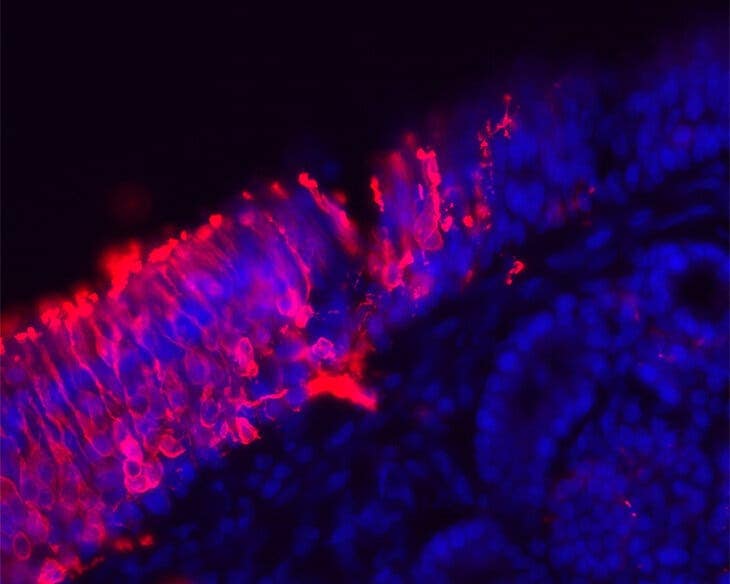New research suggests that humans may actually be able to create new neurons after childhood. The paper reports on a new “neuron nursery” located in a section of our noses.

Image credits Duke University.
The study was published in the context of a much wider (and long-lasting) debate on whether humans are able to create new neurons after the age of 13. Neurons, the ultra-specialized cells that underpin our nervous systems, aren’t only useful for thinking or telling muscles to move. The current study focuses on neurons that act as receptors in the olfactory neuroepithelium of the nose. These neurons directly underpin our ability to smell.
Smells brand new
“We do not fully understand why people lose their sense of smell, which can occur for many reasons, and our data sets provide a wealth of information about the cell populations present in adult olfactory tissue,” said Brad Goldstein, M.D., Ph.D., an associate professor and vice chair for research in the Department of Head and Neck Surgery and Communication Sciences at Duke University and senior author of the study.
“This is an important step in developing treatment strategies for conditions when this tissue may be damaged.”
This study is the first of its kind to use human tissue samples (previously only mice nasal tissue samples were used). Starting from them, the team found that immature neurons being produced by stem cells made up over half of the number of neurons in the samples, suggesting that they were actively being produced there. Which, obviously, means that neurons can be produced throughout our lifetime.
Hiroaki Matsunami, Ph.D., a professor in the Department of Molecular Genetics and Microbiology at Duke University and co-author on the paper, explains that the molecular make-up of these immature neurons point heavily to them being grown there during adulthood.
The team says that their findings could help guide treatment options for conditions that cause smell damage or loss, but could in time be applicable to the nervous system as a whole.
“It will be very useful to use this window to analyze samples from people with conditions in which the nervous system has degeneration, such as Alzheimer’s disease,” said Goldstein.
“Alzheimer’s is of particular interest, since these patients lose their sense of smell quite early in the disease process, and we have few treatments for Alzheimer’s disease. So, it may make sense to look carefully at regions of the olfactory system in these patients.”
The nose is a very exposed site, the team adds, meaning that in time we could learn how to collect neuronal stem cells from the area and use them to treat other disorders involving the nervous system.
“It is not outside of the realm of possibility,” said Matsunami.
The paper “Single-cell analysis of olfactory neurogenesis and differentiation in adult humans” has been published in the journal Nature Neuroscience.


